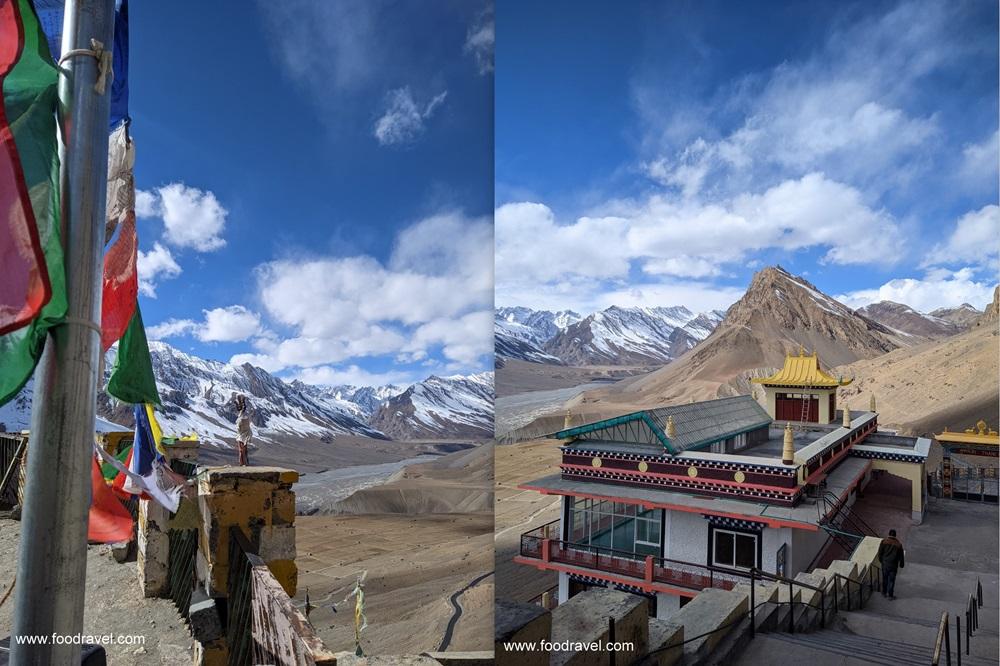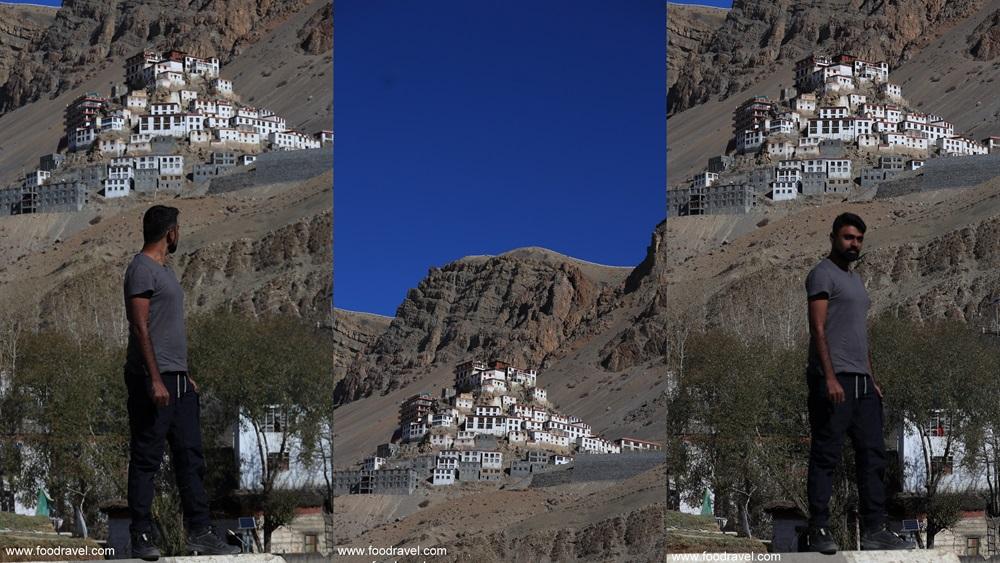Key Monastery, or Key Gompa as it’s often referred to, stands as a revered landmark in the captivating landscape of Spiti Valley. Renowned for its spiritual ambiance, this sacred sanctuary has found its way into countless Instagram feeds and travel blogs, each capturing just a glimpse of its mystical allure. As I flipped through these digital snapshots, I couldn’t help but feel drawn to embark on my own pilgrimage to this ancient monastery. The journey to Key Monastery was still etched as a distant dream on my calendar, yet the anticipation of what lay ahead promised to be one of the most exhilarating adventures of my life.
With my backpack slung over my shoulder, I embarked on a long and adventurous bus ride toward the towering peaks of the Himalayas. As the bus trundled along winding mountain roads, we made stops at various pit stops, each offering a glimpse into the rugged beauty of the landscape. Yet, with every passing mile, my excitement mounted, knowing that each twist and turn brought me closer to my destination. Finally, as the sun began its descent behind the jagged horizon, we reached Kaza, the gateway to Spiti Valley. Stepping off the bus, I was greeted by the crisp mountain air and a sense of anticipation that tingled in every nerve. The fading light cast an ethereal glow over the landscape, transforming the rugged terrain into a canvas of shadows and silhouettes. As I stood amidst the quietude of dusk, I knew that my journey to Key Monastery had only just begun.


Spiti Valley is renowned for its rich culture and traditions of monasteries, each a testament to the region’s profound cultural heritage and spiritual legacy. As I stood in the midst of this ancient land, surrounded by towering peaks and sweeping valleys, the presence of these sacred institutions served as a poignant reminder of the timeless traditions and beliefs that have endured for centuries.
From Key Monastery perched high atop a rocky outcrop to the serene confines of Dhankar Monastery clinging precariously to a cliffside, each monastery holds its own unique charm and significance. As I traversed the rugged terrain of Spiti Valley, I couldn’t help but marvel at the architectural marvels and spiritual sanctuaries that dotted the landscape, each offering a glimpse into the rich tapestry of Tibetan Buddhism.
But beyond their architectural beauty, these monasteries serve as living repositories of wisdom and knowledge, preserving ancient teachings and rituals that have been passed down through generations. From the resonant chants of monks to the colorful prayer flags fluttering in the mountain breeze, the essence of spirituality permeates every corner of Spiti Valley, inviting travelers like myself to pause, reflect, and immerse ourselves in the sacred rhythms of this timeless land.
Key Monastery, also known as Kye Gompa, holds a rich history dating back to the 11th century, believed to have been founded by Dromtön, a disciple of the esteemed teacher Atisha. However, historical accounts suggest that the reference might have pertained to a Kadampa monastery in the nearby village of Rangrik, lost during the 14th-century ascendancy of the Sakya sect with Mongol patronage.
In the mid-17th century, during the reign of the Fifth Dalai Lama, Key Monastery faced extensive looting and damage by Mongol invaders, eventually aligning with the Gelugpa sect. Around 1821, it fell victim to further destruction during conflicts between Ladakh and Kullu. In 1841, severe damage was inflicted by the Dogra army under Ghulam Khan and Rahim Khan, followed by attacks by Sikhs later that same year. The monastery endured ravages by fire in the 1840s. In 1975, a violent earthquake struck, causing additional damage that was subsequently repaired with the assistance of the Archaeological Survey of India and the State Public Works Department.
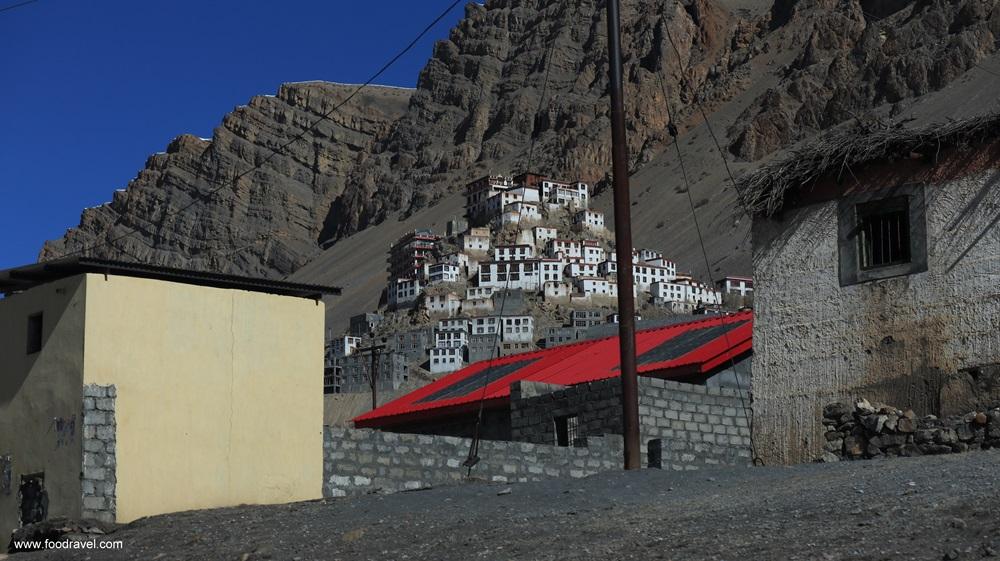

Key Monastery, also known as Kye Gompa, holds a rich history dating back to the 11th century, believed to have been founded by Dromtön, a disciple of the esteemed teacher Atisha. However, historical accounts suggest that the reference might have pertained to a Kadampa monastery in the nearby village of Rangrik, lost during the 14th-century ascendancy of the Sakya sect with Mongol patronage.
In the mid-17th century, during the reign of the Fifth Dalai Lama, Key Monastery faced extensive looting and damage by Mongol invaders, eventually aligning with the Gelugpa sect. Around 1821, it fell victim to further destruction during conflicts between Ladakh and Kullu. In 1841, severe damage was inflicted by the Dogra army under Ghulam Khan and Rahim Khan, followed by attacks by Sikhs later that same year. The monastery endured ravages by fire in the 1840s. In 1975, a violent earthquake struck, causing additional damage that was subsequently repaired with the assistance of the Archaeological Survey of India and the State Public Works Department.


Despite these adversities, Key Monastery persevered as a bastion of faith and heritage, remaining affiliated with the Gelugpa sect alongside fellow Spiti Valley monasteries like Tabo Monastery and Dhankar Gompa. It continues to be an enduring symbol of spirituality and cultural significance, beckoning visitors to immerse themselves in its timeless allure and tranquility.
The monastery’s architectural style is primarily influenced by Tibetan and Chinese designs, with elements of Indian Buddhist architecture interspersed throughout. Its strategic location atop a rocky outcrop not only offers breathtaking panoramic views but also serves as a testament to the ingenuity of its builders. One of the most striking features of Key Monastery is its whitewashed walls, which gleam brilliantly under the harsh Himalayan sun. This traditional Tibetan architectural style not only helps to reflect sunlight, keeping the interior cool during the scorching summers but also lends the monastery a sense of purity and serenity.



As you approach the monastery, you’re greeted by a series of prayer flags fluttering in the mountain breeze, their vibrant colors adding a touch of whimsy to the stark landscape. The entrance, adorned with intricate wood carvings and colorful paintings, sets the tone for the visual feast that awaits inside. Inside the monastery, the main Assembly Hall, or Dukhang, is a sight to behold. Its grandeur is accentuated by elaborately painted murals depicting scenes from Buddhist scriptures and legends, while the ceiling is adorned with intricate wooden carvings and chandeliers.
The architecture of Key Monastery is not just about aesthetics; it’s also designed to facilitate the daily rituals and activities of its inhabitants. The layout of the monastery is carefully planned, with separate spaces for prayer, meditation, study, and communal gatherings. In addition to the main hall, Key Monastery boasts a rich collection of ancillary structures, including monk cells, libraries, and meditation rooms. Each space is meticulously designed to create a harmonious balance between functionality and spiritual inspiration. As you explore the labyrinthine corridors and staircases of Key Monastery, you can’t help but marvel at the skill and devotion that went into its construction. It’s a living testament to the enduring legacy of Tibetan Buddhism in the Himalayan region and a reminder of the profound spiritual connection that transcends time and space.
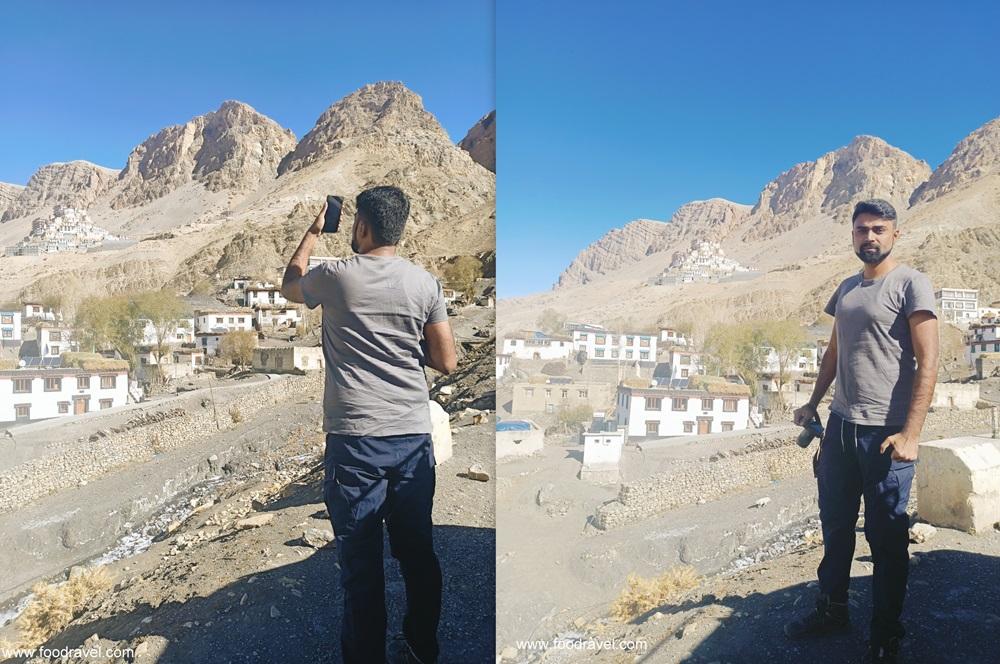
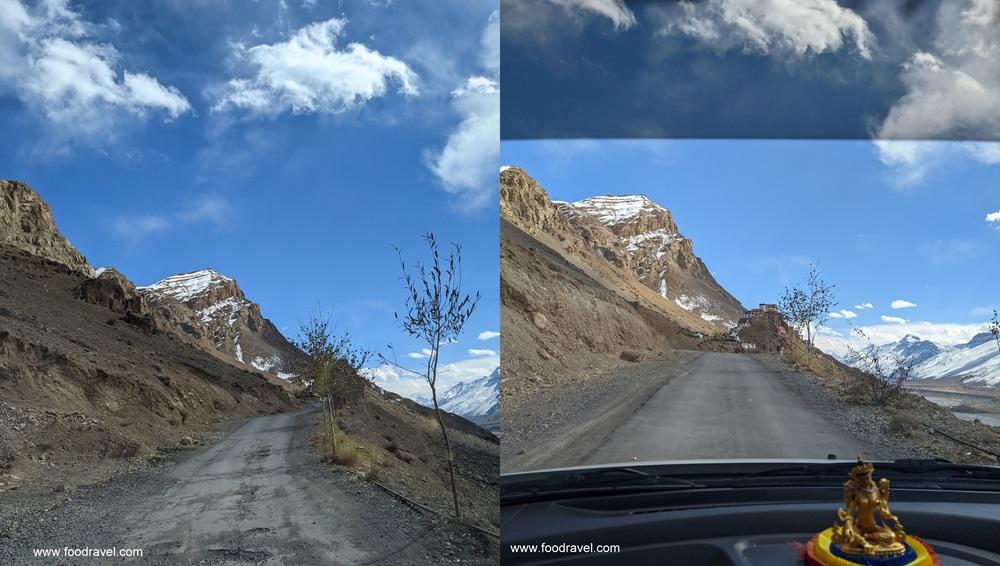
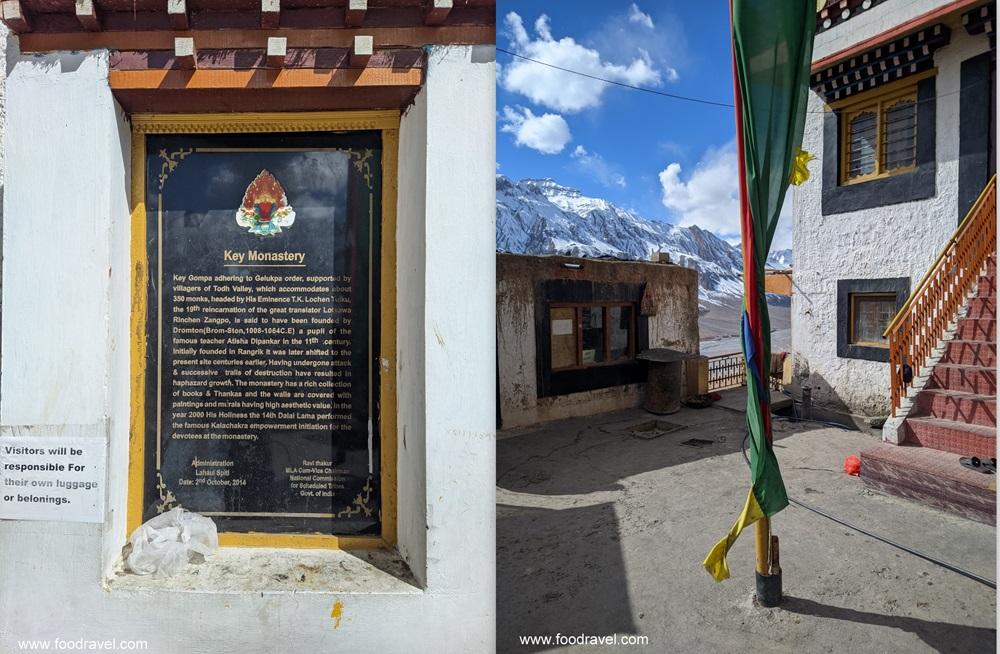
How to Reach Key Monastery
Situated at an altitude of 4,116 meters in the breathtaking landscapes of Himachal Pradesh, Key Monastery lies approximately 14 kilometers away from the town of Kaza. To reach this sacred sanctuary, one embarks on a journey towards Losar from Kaza. Along the way, a pivotal point is marked by a bridge where the road diverges: the straight path leading to Ki and Kibber, while the left turn guides travelers towards Rangrik and onward to Losar, spanning across the bridge.
Reaching Key Monastery involves a journey through the breathtaking landscapes of the Spiti Valley. Here’s a guide on how to reach this sacred sanctuary:
- By Air: The nearest airport to Key Monastery is in Bhuntar, near Kullu, Himachal Pradesh. From there, you can either hire a taxi or take a bus to reach Manali. From Manali, you can embark on a scenic road trip to Spiti Valley via the famous Rohtang Pass and Kunzum Pass.
- By Road: The most common way to reach Key Monastery is by road. You can either drive from Manali or take a bus from Manali Bus Stand. The journey from Manali to Spiti Valley is approximately 200-250 kilometers long and takes around 10-12 hours, depending on road conditions and weather. The route passes through picturesque landscapes, high mountain passes, and winding roads, offering breathtaking views at every turn.
- By Bus: Himachal Road Transport Corporation (HRTC) operates regular bus services from Manali to Kaza, the main town in Spiti Valley. The buses usually run early in the morning and take around 12-14 hours to reach Kaza. It’s advisable to book your tickets in advance, especially during the peak tourist season.
- By Motorcycle: For adventure enthusiasts, riding a motorcycle to Key Monastery is an exhilarating option. You can rent bikes from Manali and embark on a thrilling journey through the Himalayan terrain. However, make sure you’re well-prepared for the challenging road conditions, including high altitudes, rough roads, and unpredictable weather.
- Trekking: If you’re up for an adventure, you can also trek to Key Monastery from nearby villages like Kibber or Langza. The trek offers stunning views of the surrounding mountains and valleys but requires proper planning, equipment, and acclimatization due to the high altitude.
Regardless of the mode of transportation you choose, reaching Key Monastery is an unforgettable experience that rewards you with not just spiritual solace but also awe-inspiring vistas of the Himalayas. Just remember to check weather and road conditions beforehand, especially during the winter months when some passes may be closed due to snowfall.
Journey of Serenity: Exploring Key Monastery’s Spiritual Oasis
Embarking on a day trip, I hopped into a cab that promised to unveil the wonders of the region, with Key Monastery as one of its key stops. The driver, a friendly soul, doubled as a knowledgeable guide, regaling me with fascinating tidbits about the surrounding area as we traversed through the picturesque landscapes.
Arriving at Key Monastery, a serene oasis amidst the rugged terrain, I was warmly greeted by a monk who ushered me into what seemed like a quaint kitchen. Here, I was welcomed with a fragrant herbal beverage, a delightful concoction that not only refreshed my senses but also infused me with a newfound energy. As I savored every sip, the monk’s genuine hospitality shone through as he poured another cup, a gesture that touched my heart and left me feeling truly cared for.


With renewed vigor, I followed the monk as he guided us through the labyrinthine corridors of the monastery, each step unveiling new wonders and insights into the spiritual realm. From the tranquil meditation chambers to the ornate prayer halls adorned with intricate murals, every corner of the monastery whispered tales of ancient wisdom and devotion. Under the monk’s gentle guidance, I was transported into a world of tranquility and introspection, a journey that left an indelible mark on my soul.
In the quiet solitude of one of the monastery’s chambers, I found myself enveloped in a profound sense of tranquility and introspection. As I sat in stillness, the serenity surrounding me seemed to deepen, casting a veil of mystery over the sacred space. In that moment of solitude, I had the privilege of conversing with a monk whose presence exuded wisdom and grace. With each word he spoke, it was as if precious gems of insight were being shared, illuminating the path to a deeper understanding of life, happiness, and propriety.


Through our exchange, I gleaned invaluable lessons about the essence of existence and the true meaning of contentment. The monk’s words resonated within me, echoing long after our conversation had ended. It was a brief yet profound encounter, a reminder of the timeless wisdom that resides within the hearts of those who seek it. As I emerged from the chamber, I carried with me not just memories but a newfound sense of clarity and purpose. It was a moment of profound connection, a sacred exchange that would stay with me as a guiding light on my journey through life.
Key Monastery stands as more than just a physical structure; it is a living embodiment of spiritual and cultural significance that echoes through the ages. Nestled amidst the majestic Himalayas, its towering presence serves as a beacon of enlightenment, drawing seekers from far and wide to its sacred halls. At its core, Key Monastery is a sanctuary of spiritual awakening, a place where the teachings of Tibetan Buddhism come alive in vibrant hues of prayer flags and resonant chants. Here, monks dedicate their lives to the pursuit of enlightenment, following in the footsteps of ancient sages who sought wisdom in the solitude of the mountains.
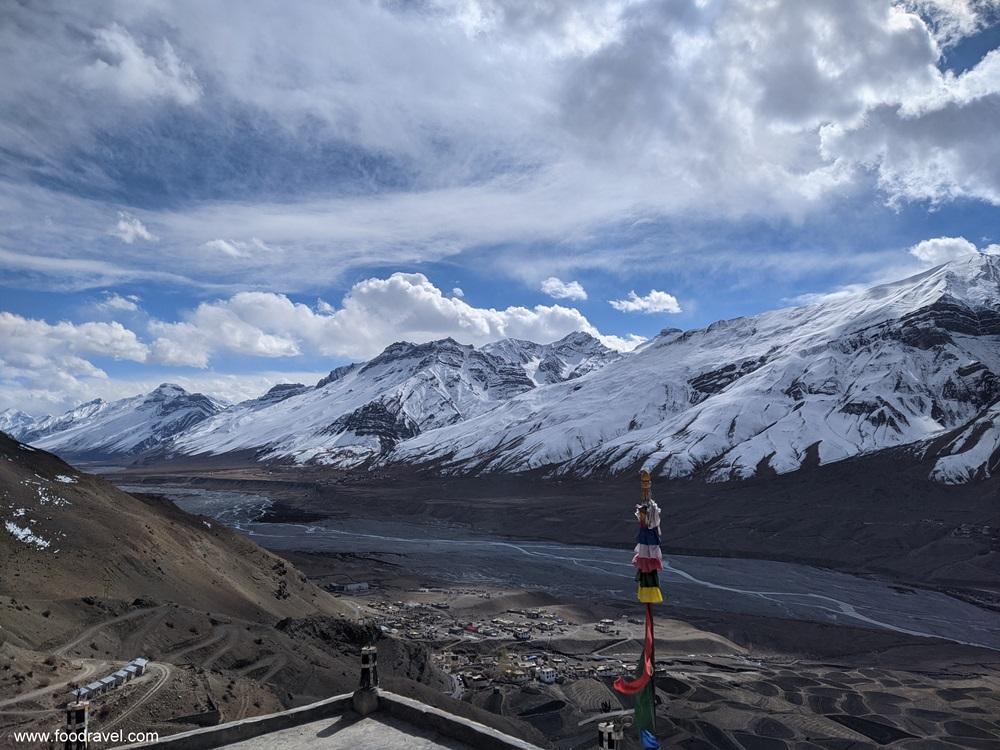


But beyond its role as a center of spiritual practice, Key Monastery is also a custodian of cultural heritage, preserving ancient traditions and rituals that have been passed down through generations. Its walls are adorned with intricate paintings and murals, each telling a story of devotion and faith that transcends time. For centuries, Key Monastery has served as a hub of learning and enlightenment, attracting scholars and seekers from across the Tibetan plateau and beyond. Its teachings have inspired countless souls to embark on the path of self-discovery, guiding them towards a deeper understanding of the human experience and the interconnectedness of all beings.


Today, as visitors from around the world flock to its sacred grounds, Key Monastery continues to fulfill its role as a beacon of light in an ever-changing world. It is a place of pilgrimage for the faithful, a refuge for the weary, and a source of inspiration for all who seek solace in the timeless wisdom of the mountains. In its spiritual and cultural significance, Key Monastery serves as a reminder of the enduring power of faith and the eternal quest for enlightenment. It is a testament to the resilience of the human spirit and the boundless depths of the soul, inviting us to pause, reflect, and discover the true meaning of existence amidst the tranquil beauty of the Himalayas.

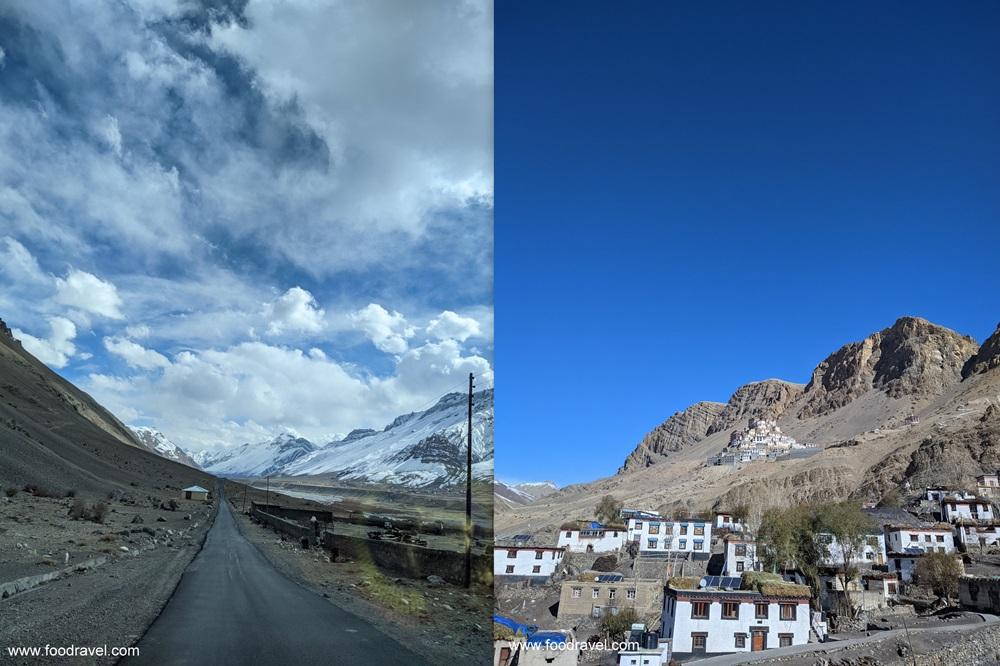

Key Monastery is indeed a must-visit destination when you find yourself in Kaza or exploring the enchanting Spiti Valley. It serves as a perfect hub for local sightseeing, offering a glimpse into the rich tapestry of culture and tradition that defines the Spiti Valley. Whether you’re drawn to its ancient architecture, vibrant murals, or the serene ambiance of its surroundings, a visit to Key Monastery promises to be a truly enriching experience, allowing you to immerse yourself in the essence of Spiti’s local heritage and spirituality.


What is Key Monastery?
- Key Monastery, also known as Kye Gompa, is a Tibetan Buddhist monastery located in the Spiti Valley of Himachal Pradesh, India.
![]()
How old is Key Monastery?
- Key Monastery dates back to the 11th century, believed to have been founded by Dromtön, a disciple of the esteemed teacher Atisha.
![]()
How far is Key Monastery from Kaza?
- Key Monastery is approximately 14 kilometers away from the town of Kaza, the administrative capital of the Spiti Valley.
![]()
What are the main attractions at Key Monastery?
- The monastery is renowned for its ancient architecture, stunning views of the Himalayas, vibrant murals and paintings, and daily rituals performed by resident monks.
![]()
What is the altitude of Key Monastery?
- Key Monastery is situated at an altitude of 4,116 meters (13,668 feet) above sea level.
![]()
Are there any restrictions for visitors at Key Monastery?
- Visitors are expected to dress modestly and behave respectfully while inside the monastery. Photography may be restricted in certain areas, so it’s best to ask permission before taking pictures.
![]()
Can visitors stay overnight at Key Monastery?
- While Key Monastery does not offer overnight accommodation for tourists, nearby guesthouses and homestays in Kaza provide lodging options. Key Monastery offers accommodation options for visitors, including a monastery guest house where you can stay for the day. Additionally, guests have the option to stay inside the monastery rooms by paying a small fee directly to the monastery. During your stay, you’ll have the opportunity to experience the monastery’s unique atmosphere and hospitality, including sharing meals prepared for the monks. It promises to be an unforgettable experience, immersing you in the daily life and rhythms of this sacred sanctuary.
![]()
Is there an entrance fee to visit Key Monastery?
- No, there is no entrance fee to visit Key Monastery. However, donations are welcome to support the upkeep and maintenance of the monastery.
![]()
Is Key Monastery accessible year-round?
- While the monastery is generally accessible throughout the year, heavy snowfall during the winter months (December to February) may result in road closures and limited access to the region.
![]()
Are guided tours available at Key Monastery?
- Yes, guided tours led by knowledgeable monks or local guides are available for visitors who wish to learn more about the monastery’s history, architecture, and spiritual significance.
![]()
![]()



